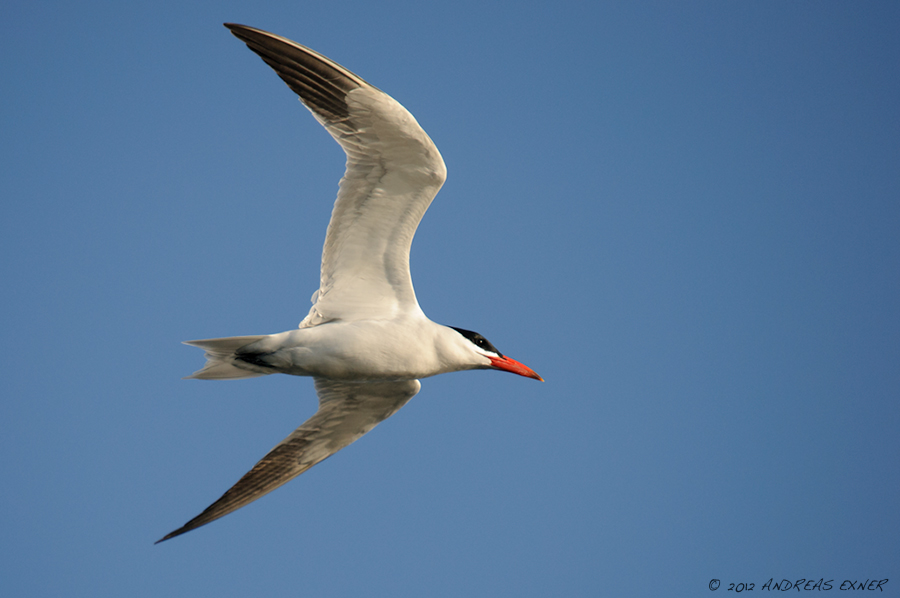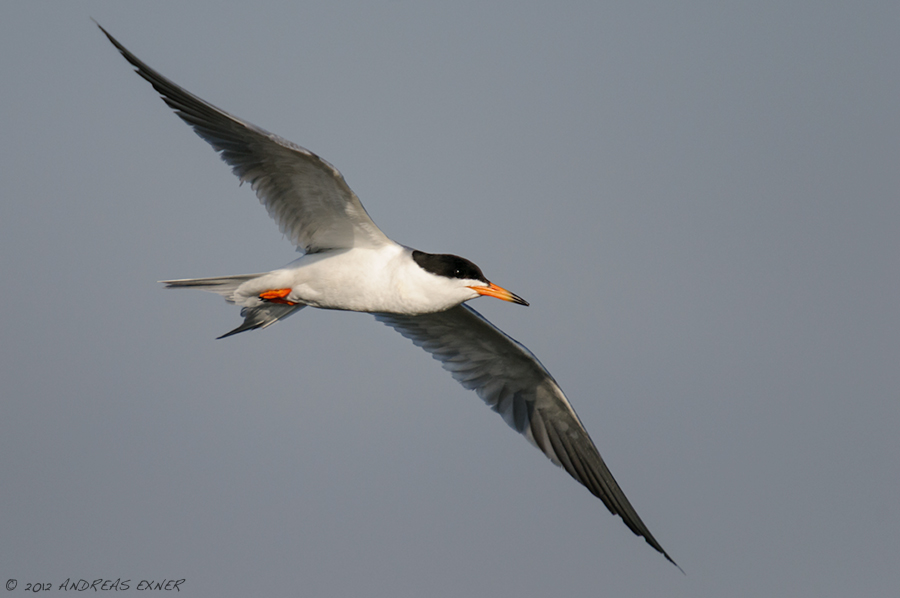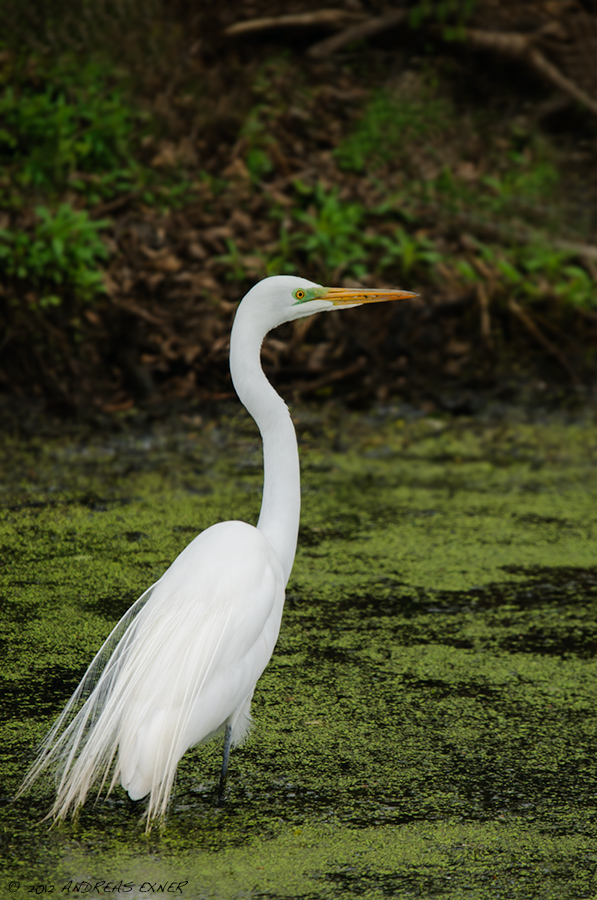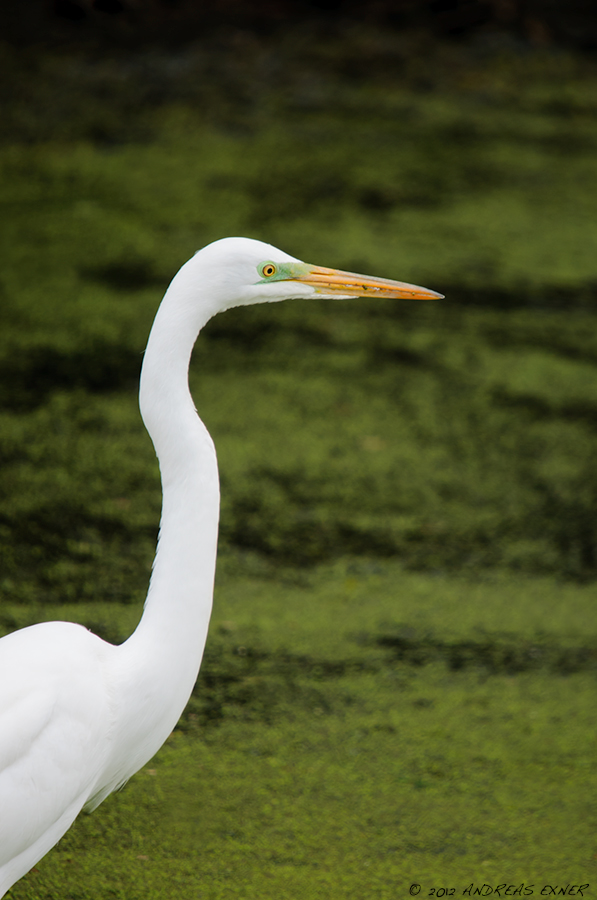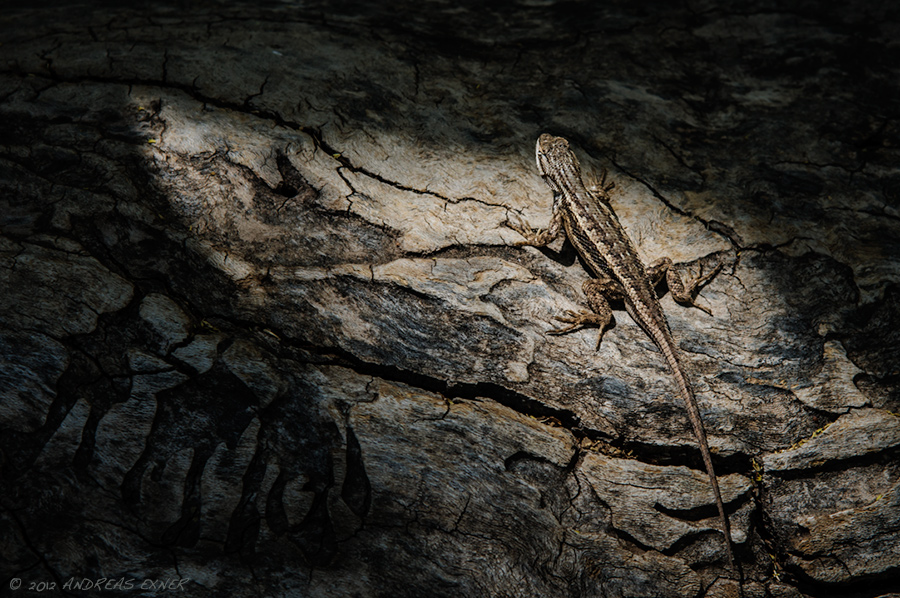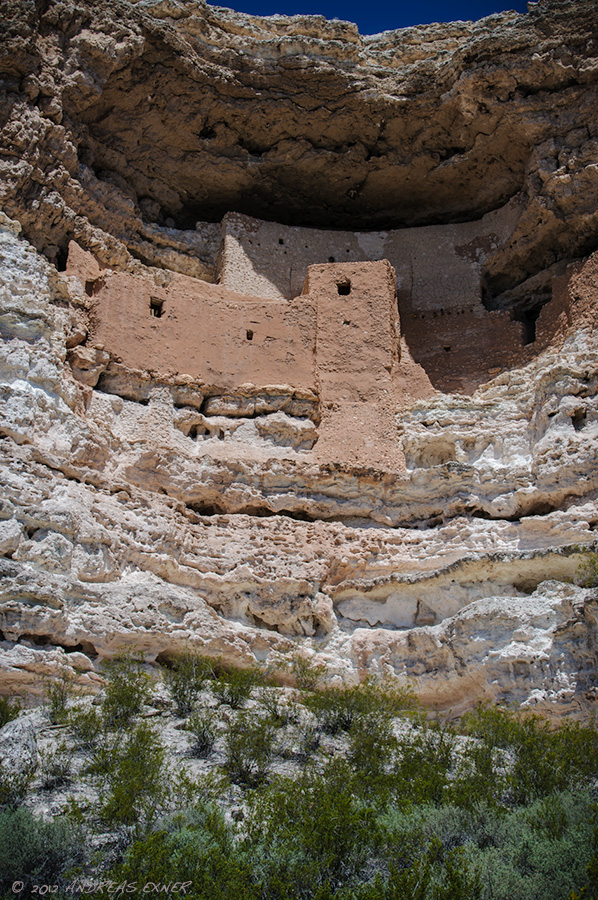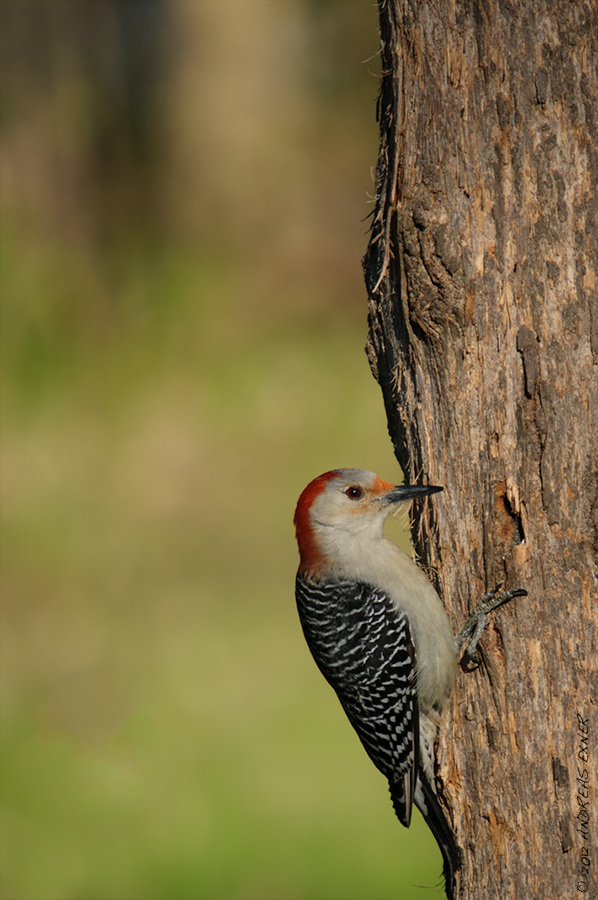I'm already in the next city on this week's business trip but still like to show you another image from my short visit to the Bolsa Chica Ecological Preserve two days ago. This Caspian Tern flew over my head a couple times and I'm very glad I can share this photo with you. I had a nice conversation with a local photographer and he helped me with identification of the birds and I learned a lot about their behavior. It is always nice when wildlife photographers share their knowledge about the local species with someone who is relatively new to the area. Terns are not always easy to identify and they may have a different look during the winter.
Nature clicks #106 - Foster's Tern
I flew to Los Angeles today because business requires my presence here tomorrow. The long daylight gave me the chance to visit the Bolsa Chica Ecological Preserve for a couple hours this evening. I have written several times before here in my blog how much I like these wetlands at the Pacific coast just south of Long Beach, California. At this time of the year we can't find by far as many birds here as during the winter. However, this is a place where always something is going on.
The light is just great for bird photography here in the evening and today I was able to make finally a picture of a Foster's Tern in flight that I really like. I have tried this many times before but never got the result I envisioned. These birds are very fast moving while hovering over the water and hunting for fish. The difficult part is not so much to get a sharp shot. The hard part is to get a catch light just right on the eye of the tern, so that it is clearly visible and doesn't just blend into the black cap of the bird. The Foster's Terns have nests nearby but the location does not allow a clear view into them. The adults look different than during the winter, when they miss the black cap but have a black eye patch and a dark bill instead. The Foster's Tern wasn't the only tern I saw today, but this is something for another "Nature clicks" post...
Nature clicks #105 - Common Snapping Turtle
Yesterday I promised you another wildlife encounter. I left our little tent early Sunday morning to look for some shooting opportunities at one of the lakes in Governor Dodge State Park, Wisconsin. I was actually looking for some wood ducks I had seen last fall. I saw the female with ten little ducklings but they were too far away for a good picture.
Instead I found this big Common Snapping Turtle on a sandy spot in the grass near Cox Hollow Lake. This was the closest I have ever been to one of these creatures. The dry duck weed on top of its upper shell told me that it must have been on land for some time already. This turtle had left quite a few "digging marks" in the sand and I was wondering if this was a female that just had laid her eggs into the sand.
As always, I tried not to disturb the animal and worked from a distance with a focal length between 270 and 500mm. The turtle gave me about 20 minutes before it slowly moved towards the water and disappeared. The Common Snapping Turtle may not be the prettiest animal on this planet but nevertheless it was very interesting to watch this aquatic ambush hunter with its beak-like jaws.
Nature clicks #104 - Least Bittern
A couple more from our excursion to the wetlands last weekend. I was very happy to see for the first time a Least Bittern. This small heron was patiently standing in the duck weed covered water and watching out for little fish. It is absolutely amazing how far they can stretch their necks while hunting for food in the muddy waters.
Nature clicks #103 - Great Crested Flycatcher
I like to interrupt my series about the wonderful city of Prague for another "Nature clicks" post. Because of all my recent traveling I haven't been in the Green Island Wetlands along the Mississippi here in Iowa for five weeks now. Yesterday was a special day for me because my neighbor Boris and his son Alex joined me on the trip to the wetlands. It brings a total new momentum to the adventure because six eyes see much more than only two. As a result we found at least three new birds I haven't seen in the wetlands before. It was young Alex who discovered the Great Crested Flycatcher first. This photo was not easy to make because of wind and the bird was constantly moving to a different perch. I didn't nail sharpness 100% but I believe it is still worth to be shown here. We had a lot of fun watching out for birds and critters together and time went by very quickly.
Nature clicks #102 - Eastern Phoebe
No, I didn't give up nature photography. I just work my way through the photos from our trip to Germany and the Czech Republic and of course, I like to share some of my images with you.
Back home now I have always an eye on what's going on in the front and backyard of our house. We were blessed with great light between 8 and 9AM during the last two mornings. The Eastern Phoebe, I had written about already in my post "Nature clicks #98" a few weeks ago, was posing again right in front of me. It is such a cute bird. I hope you don't mind to see it again here. It is fun to watch how it suddenly takes off and tries to catch insects and then returns to its perch or moves on to another one.
Nature clicks #101 - Red-winged Blackbird
It is easy to neglect the birds that we can see all the time along the roads. The Red-winged Blackbird is present at many places here in Iowa. It is a very dominant bird and can attack humans or other birds that interfere with the territory they claim as theirs.
I checked a place in the Green Island Wetlands for the arrival of its cousin, the Yellow-winged Blackbird, but I couldn't find any so far. It may have been still a few days too early. I hope they will be back again. In the meantime I just enjoy making pictures of the red-winged. ;-)
Nature clicks #100 - Great Egret
It was a great day for wildlife photography today. A thin layer of clouds made for nice and soft light. The only requirement for a decent image was to keep the clouds and their gray reflections on the water out of the frame. Lots of birds are in the Green Island Wetlands right now. However, birds in flight against the sky or swimming on reflecting water were not really an option today. I looked for spots were the water did not reflect so much but that was not always easy. The Great Egrets are back and if you can get close enough they are always worth a click. They are usually not as shy as the Great Blue Herons.
I really wanted to go to the Green Island Wetlands today. Because of my recent business travel my last visit there was already more than three weeks ago and my next visit will be probably not much before the end of May. Yes, I look forward to travel again next week. I go over to Germany for a big trade show in Düsseldorf and after that I fly to my home town for my son's wedding. As you can imagine the long lens will be left home but I hope to snap a few pictures while traveling.
I may post a couple more shots from today's adventure, so please stay tuned...
Nature clicks #99 (or Arizona, part 5)
The only wildlife I had in front of my lens in Arizona was this lizard, who was very well camouflaged on this old tree trunk. While I processed the image on my computer I became aware that this is actually a "butt shot" and but shots are rude. Lizards are not running around here in Eastern Iowa in great numbers and so I think it is ok to show this picture anyway ;-) . I still like the shot because the lizard placed himself in this sunny spot on the tree trunk. The picture was taken just below the Montezuma Castle, a pueblo that was built in the cliffs of the Verde Valley. The Southern Sinagua, a culture that lived and farmed in the Verde Valley, built these pueblos by about 1150 but they were abandoned by the early 1400s for unknown reasons. Montezuma Castle is one of the best preserved prehistoric structures in the Southwest. (Source: Visitor information brochure Montezuma Castle / Tuzigoot, National Park Service)
SIGMA 50-500mm / f4.5-6.3 APO DG HSM, after more than two years
Sometimes I become frustrated if the results of my wildlife photography don't reflect what I saw through the viewfinder. It is always easy to blame the gear, in particular the lens. I can tell you, I had a long learning curve with my "work horse", the SIGMA 50-500mm / f4.5-6.3 APO DG HSM. I wrote a post about this lens shortly after I bought it more than two years ago. This post is the one that received the most clicks in my blog up today. It tells me that a lot of other photographers consider to buy this lens. Today, several ten thousand clicks later after I bought the lens I believe I have a much better feeling what this lens can do for my photography and where the limits are. I like to share my thoughts with you and if it helps you to make the right decision what lens to buy I will be happy.
First let me remind you, I do not own the Sigma 50-500 with optical stabilization (Sigma calls it "OS"). This feature came out shortly after I bought mine. You probably will have a benefit by having image stabilization, especially if you try to handhold the lens without any other support. Second, I like to mention that my blog is free of advertising and that I don't get a penny for writing good or bad things about Sigma or any other brand. And last my experience with this lens is mainly based on wildlife photography. A sports photographer may have different things to say.
Here is what I gained during the last couple of years:
- The SIGMA 50-500 is a heavy lens. If you plan to walk around for long periods of time with your camera and this lens attached and if your physical strength is limited, this may not be the right lens for you. There is a reason that it is called "The BIGMA".
- The lens is robust built. It does not have a cheap "plastic feeling". The zoom and focus rings work smooth and have a good resistance for fine tuning. The zoom can be locked at the 50mm focal length but as soon it is unlocked the lens will creep all the way to 500mm if carried vertical. A rubber band (O-ring) over the gap between zoom ring and lens barrel helps to prevent the lens creep.
- The tripod collar is sturdy and much better than on a Nikon 80-400 I had tried before.
- The lens hood sits very stabile and doesn't fall off as seen on other lenses I own.
- The Sigma 50-500 needs a very good support for shooting wildlife. The first few months I mounted it to a KIRK ball head on top of my tripod. I do not recommend this. My results improved tremendously after I started using a gimbal head for the lens. I now use an INDURO GHBA in combination with the KIRK BH3 ball head. A much more expensive gimbal head will be most likely even better. However, the GHBA works well for me and you don't have to break the bank.
- A good and stabile tripod is essential. Don't blame the lens if you work with a set of tripod legs that is not designed for this kind of weight.
- The SIGMA 50-500mm / f4.5-6.3 APO DG HSM is a slow lens. The maximum aperture of f/6.3 @ 500 mm requires a lot of light in order to maintain a fast shutter speed. If you are new to long lens shooting technique try to make your first thousand clicks in real good light. Try to keep the ISO setting at a low number (100, 200). Good light will allow you to shoot with a fast shutter speed and the low ISO setting prevents you from dealing with noise. Any noise reduction in post process will reduce sharpness up to some degree. This way you will learn that your lens is capable of making sharp photos.
- If you make your first steps with a long lens, look for animals or subjects with a good contrast. Learning how to focus and how to keep the autofocus sensor on the animal's eye or chest works definitely better on a subject with contrasty edges, like the woodpecker above. Shooting a pair of Sandhill Cranes in the reeds (as posted a few days ago) is much more difficult because of the lack of contrast.
- Watch the background. With f/6.3 @ 500 mm you will not always get the same nicely blurred background like with a Nikkor 400/f2.8 or 500/f4. Shooting with a well chosen background can make a big difference. In general, you may have to do a little more work in post than the people that own the more expensive glass. Face it, that's the price you pay for buying the less expensive lens.
- I personally like to keep the ISO low in order to get as much detail as possible for my wildlife photography. I usually dial in between -0.5 and -1.5EV exposure compensation. This buys me also a faster shutter speed and can make the difference between getting and not getting the shot.
- The SIGMA 50-500mm / f4.5-6.3 APO DG HSM is a lens that is capable to deliver sharp images. Period. Don't get frustrated just after the first 500 shots. It is essential that you learn all about long lens shooting technique. The best source I know for that is the website of famous wildlife and aviation photographer Moose Peterson. There is a link to his blog on the left hand side under "Blogs I follow". Search for his videos where he teaches everything about using a lens with long focal length. You will not regret!
I hope this will give all of you, who are looking for answers of the question "Is this the right lens for me?" a little help to make your decision. Please drop me a note if this blogpost was helpful or if your experience with the Sigma 50-500 is different from mine.
February 2013: I had a chance to shoot with a newer version of this lens that had the optical stabilization (OS) feature. Please feel free to click HERE if you like to read my thoughts about it.

